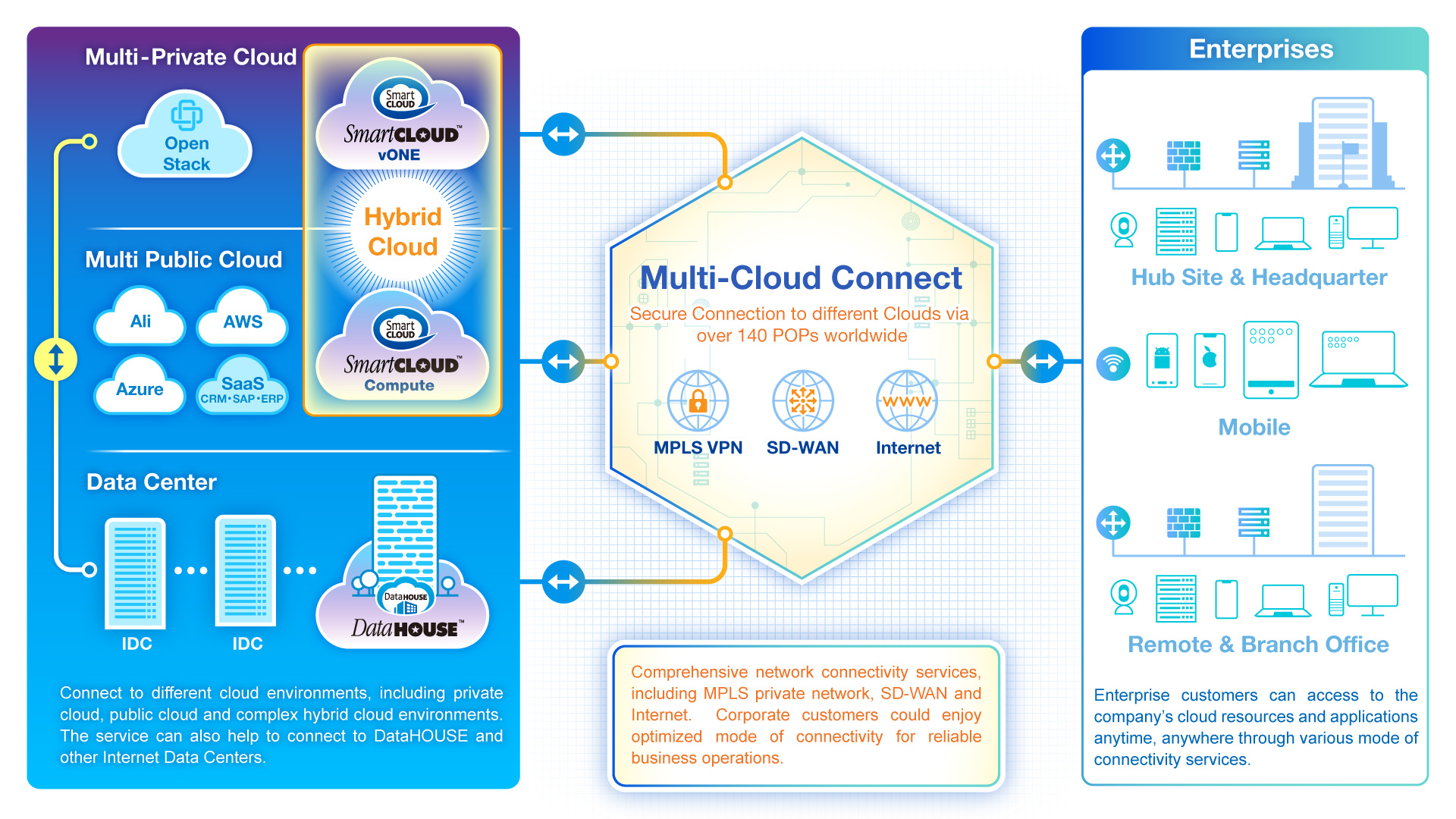What Is Multi-Cloud Networking And What Are Its Key Features?
Enterprises Are Looking For Networks Based On Multi-Cloud Networking That Provides Planning, Security Integration, And Unified Visibility In A Consumption-Based Model.
The concept of a multi-cloud network suddenly caught the attention of companies as they began to migrate to cloud infrastructure to support digital transformation. Companies have faced various problems in traditional infrastructure and cloud computing, and creative multi-cloud plans have solved most of them.
Previously, companies used different methods to connect other platforms, optimize costs, and provide a comprehensive view of cloud environments, each with disadvantages.
A situation where multi cloud network architecture is developing can facilitate the implementation of complex multi-cloud environments, provide stable connections to companies, and allow users to have comprehensive control and view of the environment.
What is multi-cloud networking?
In a multi-cloud strategy, organizations use the services of two or more public cloud providers, mainly in conjunction with PaaS or IaaS paradigms. Additionally, organizations may have their private clouds defined and implemented based on in-house infrastructure.
Traditionally, companies have defined separate connections to connect to each cloud, often based on a star topology that connects environments to an internal hub. In the mentioned design, the cloud traffic passes through the intersection before reaching the destination. This issue affects performance, visibility, and security.
In the last two years, multi-cloud strategies have grown exponentially. Futuriom’s 2022 Secure Multicloud Networking Survey report indicates that 80% of respondents used PaaS or IaaS solutions from two or more public cloud providers. In a similar survey conducted by the Enterprise Strategy Group (ESG), the TechTarget website found that 86% of respondents reported using the services of five to six active PaaS and IaaS providers.
Companies eventually realized that this network design could not support the multi cloud scalability they sought. More specifically, they have concluded that a better strategy is a single platform that connects and manages disparate cloud environments and resources, now called multi-cloud networking.
A multi-cloud network connects different cloud environments, provides connectivity to, within, and between cloud platforms and the resources hosted on them, and defines a single management point for other systems.
The report published by Gartner in 2022 points out that building enterprise networks towards comprehensive management, defining detailed network policies, clear line of sight, and improving security in multi cloud environments will emphasize that they will work seamlessly together.
Components of multi-cloud network architecture
Multi-cloud networks are evolving and differentiating themselves from traditional networks. Multi-cloud networks’ main features are the ability to plan, respond, and adapt to any infrastructure, which takes some time to achieve. According to Futuriom, network infrastructure cannot fully and accurately support multi-cloud deployments.
“Our communication with end users shows that they do not see the technologies used in traditional networks as cloud-native, programmable solutions for connecting these diverse infrastructures, especially private networks and public cloud infrastructure,” the report said.
However, enterprises expect multi-cloud networks to address a broad set of needs, some of which emphasize availability. Most respondents to the Futuriom survey said they hope their multi-cloud network has the following capabilities:
- Integration with identity or directory services;
- Integration with security services, such as firewalls, zero-trust network access, and identity recognition systems;
- providing comprehensive visibility and management controls;
- traffic management to optimize cloud usage and reduce network costs;
- They are intelligently finding low-traffic routes that speed up the process of transferring information and allow users to access the services they need more shortly.
- Over time, certain technologies and features have emerged as essential components that enable versatile multi-cloud network architectures. For example, Gartner and Futuriom emphasize the role of APIs and a consumption model, such as Network as a Service (NaaS).
Application programming interfaces
Cloud API allows companies and users to connect and interact with different cloud resources. Still, each cloud provider has its API, complicating the implementation of multi-cloud strategies.
According to Gartner, the multi-cloud network architecture must be API-oriented first, which increases the dependence on APIs. In this case, programmers must know how to use these application interfaces. In addition, the interfaces should provide a seamless sharing process and visibility into the data.
In addition, the architecture should have a function similar to “flowing water” to interact dynamically with the surrounding environment. This technique provides access to a level of abstraction so that network teams do not have to learn the inner workings of each cloud service provider’s architecture.
NaaS
Futuriom believes that the multi-cloud Network will advance the concept of NaaS. NaaS is a consumption-based cloud model where companies purchase Network, infrastructure, or management services from a single provider. NaaS offers flexibility for usage requirements, faster service delivery, global visibility, and more straightforward deployment.
Futuriom says, “The above architecture allows organizations to connect any type of network resources – public communication infrastructure, public cloud infrastructure, and private data centers – and operate them as a network.”
Infrastructure as code
Another technology that Futuriom says will be key to the success of multi-cloud networks is Infrastructure as Code (IaC). This cloud paradigm emphasizes preparing and managing infrastructure and resources and replaces manual tasks with programmability.
One of the benefits of integrating multi-cloud networking with IaC is the ability to code multi-cloud networking capabilities into applications. Hence, the applications written in the future have little resemblance to today’s applications.
Software overlays
Software overlay technology enables more precise allocation and control of resources, which is a critical feature that multi cloud environments require. ” Multi-cloud networks use the above technique to provide stronger management capabilities, along with security, segmentation, and control through a single platform,” Futuriom says.
Multi-cloud network market
ESG, Futuriom, and Gartner all point to multi-cloud adoption among startups. In addition, new startups have been added to the multi-cloud network market ecosystem, the most important of which are Alkira, Arrcus, Aviatrix, and Prosimo. Of course, each company will go to such networks based on its architecture. Although the market for this technology is still tiny, Gartner notes that it is increasing in revenue and customers.
For example, in August 2022, startup Aviatrix announced that it had seen a three-year revenue growth of nearly 900 percent. Futuriom also wrote that the startup had received $62 million in annual funding by the end of the second quarter 2022. Alkira, Arrcus, and Prosimo had raised $76.73 million and $55 million, respectively.
Meanwhile, most current network vendors, except F5 and VMware, are slow to support a multi cloud network strategy.
Futuriom says in this connection: “Many companies active in the network field, such as Arista Networks, Cisco, Nokia, and Juniper Networks, are focused on other areas such as enterprise networks, data centers, and ultra-scale networks.”

